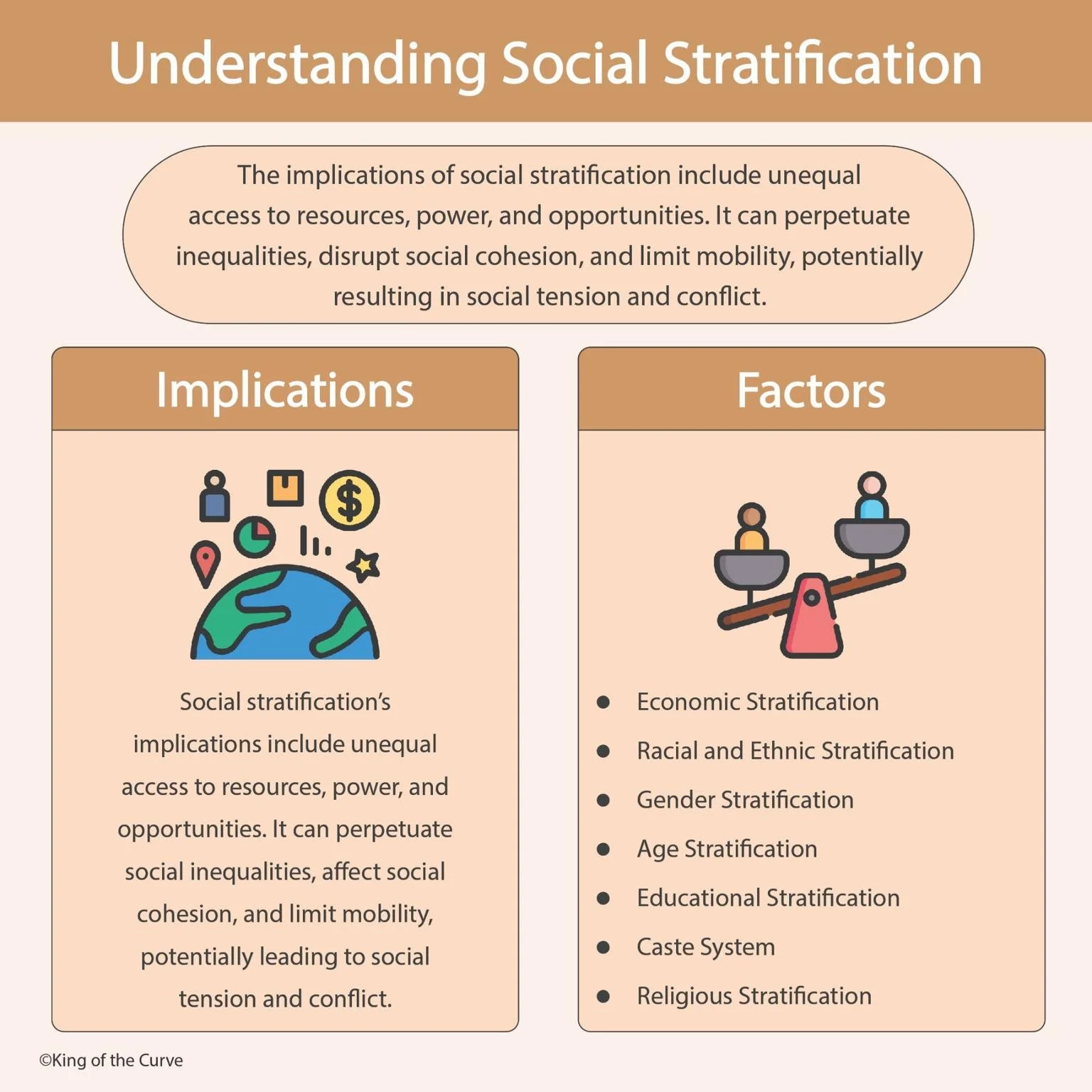🧭 Understanding Social Stratification
Social stratification is the hierarchical arrangement of individuals or groups in society based on factors such as wealth, race, education, and power. This structure shapes access to resources and life opportunities, determining one’s social standing within a community.
🚨 Implications of Social Stratification
Social stratification isn’t just about classification—it has deep-rooted social consequences:
Unequal Access: Those in lower strata often have limited access to resources, education, and job opportunities.
Perpetuation of Inequality: It continues cycles of poverty, discrimination, and lack of upward mobility.
Social Cohesion Impact: It can disrupt unity and create divisions among communities.
Tension and Conflict: These inequalities often result in social unrest, protests, and group-based conflict.
⛔ It becomes a barrier to equality and can hinder national development if not addressed properly.
🧱 Key Factors That Shape Stratification
Here are the major forces that define one's place in the social hierarchy:
📊 Understanding Social Stratification
Social stratification refers to the hierarchical arrangement of individuals or groups in society based on resources, power, and status. It shapes access to education, healthcare, and opportunity.
Implications
Social stratification’s implications include unequal access to resources, power, and opportunities. It can perpetuate social inequalities, affect social cohesion, and limit mobility, potentially leading to social tension and conflict.
Factors
- 💰 Economic Stratification — Based on income, occupation, and wealth.
- 🌍 Racial and Ethnic Stratification — Driven by historical and systemic biases.
- 🚻 Gender Stratification — Unequal treatment and access based on gender.
- 🎂 Age Stratification — Disparities experienced by youth vs elderly.
- 🎓 Educational Stratification — Stratification by level and quality of education.
- 🧬 Caste System — Rigid, hereditary class systems (e.g., in India).
- 🛐 Religious Stratification — Discrimination or status based on religious affiliation.
🧠 Why It Matters
Understanding social stratification helps in:
Recognizing root causes of inequality
Formulating inclusive policies
Advocating for social justice
📚 Whether you're prepping for the MCAT, NCLEX, or just staying informed, recognizing how these systems shape society can help you better understand patient care, social interactions, and institutional structures.
📌 Final Thoughts
Social stratification affects every aspect of human life—from healthcare access to career advancement. By learning about its types, causes, and implications, you empower yourself to promote equity and fairness in your future profession and community.
Frequently Asked Questions (FAQs)
-
Aim for 4-6 focused hours, ensuring you incorporate breaks to avoid burnout.
-
Practice mindfulness techniques, take practice exams under realistic conditions, and maintain a balanced lifestyle.
-
Set short-term goals, seek support from mentors, and reward yourself for small achievements.
-
Regular exercise improves focus, reduces stress, and enhances overall mental clarity.
-
KOTC offers personalized learning tools, gamification features, and adaptive question banks to help students stay on track without burnout.


